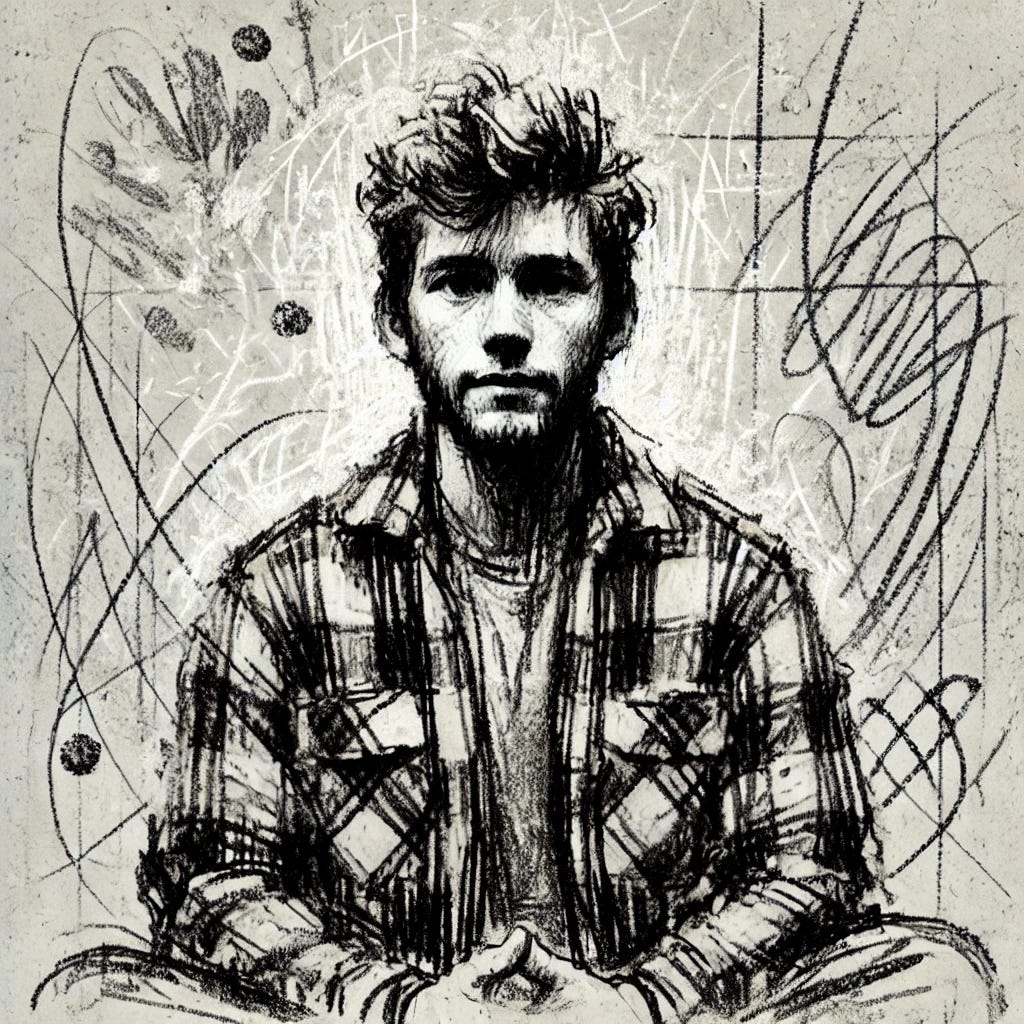Discovering the "Weird" Practice of Meditation in the Eighties
How to Meditate by Lawrence LeShan was a practical introduction
I picked up my first meditation book at age eighteen.
Growing up in a Dutch fundamentalist community during the 1970s and 80s, my reading options were limited to the carefully curated shelves of our Dutch Reformed school library. Fauns and witches in Narnia? Perfectly fine. Meditation, on the other hand? Far too weird. Later, in public high school, I explored a broader collection but never encountered a book on meditation. Occasionally, I ventured into the city’s public library, but my hometown of St. Thomas, Ontario—a conservative factory city—offered little exposure to unconventional ideas like meditation.
Meditation began gaining traction in the West during the countercultural movements of the 1960s and 70s. Often associated with hippies, alternative lifestyles, and a rejection of mainstream norms, it was viewed with suspicion in many communities. Rooted in Eastern traditions like Buddhism, Hinduism, and Taoism, meditation was often seen as foreign or strange in Western society. In my community, elders discouraged it entirely, which only piqued my curiosity as I grew older.
In 1983, as I neared the end of high school, my future felt predetermined. Many of my peers worked in local auto factories or pursued trades through college. I wasn’t sure what else I could do. Then a friend handed me a pamphlet from the school guidance centre about a youth volunteer program called Katimavik. In it, young people from across Canada—English and French speakers—would travel the country for nine months, volunteering along the way.
“Sounds weird,” I told my friend. Then I signed up.
The program began in Kingston, Ontario, which did little to challenge my assumption that Canada was just like my hometown. I worked on an archaeological dig and even met Brian Mulroney on the campaign trail for prime minister.
The second rotation, in Northwest River, Labrador, was transformative. I learned to chop wood, repair an axe, and operate a chainsaw. I travelled by boat along the Labrador coast and connected with Indigenous communities, even trying my hand at making mukluks.
Our third rotation brought us to St. Brieux, Saskatchewan. I volunteered at the local school library, where I stumbled upon a small book: How to Meditate by Lawrence LeShan. I checked it out.
LeShan’s book was a practical introduction to meditation. It explored various techniques from different traditions, emphasizing meditation’s transformative effects on personal growth, inner peace, and emotional resilience. His conversational tone and real-world examples made meditation seem both relevant and achievable. By demystifying the practice, he highlighted its universal benefits—improved focus, reduced stress, and a deeper sense of connection to oneself and the world. While there were a few eccentricities, such as cautions about extrasensory perceptions, I realized meditation wasn’t so weird after all.
I decided to try LeShan’s breath-counting technique. It’s a simple yet effective method: sit comfortably, close your eyes, and focus on your natural breath. Count each exhalation, starting from one and continuing to ten. Once you reach ten, start again at one. If your mind wanders and you lose track, gently refocus on your breath and begin again. This practice trains attention, cultivates mindfulness, and quiets mental chatter—a foundational exercise for beginners.
When I returned from Katimavik, I was apparently untainted and still acceptable to my family and community. Yes, I’d permed my hair, but I had no tattoos and hadn’t experimented with drugs. My brothers took one look at me and knew I was still a virgin. What they didn’t know was that I’d gained a new “mystical” understanding of meditation.
I practiced privately, using meditation to relax when I felt stressed or to quiet my thoughts before sleep. It remained a casual practice for decades. I read many more books on meditation, but LeShan’s remained a solid introduction and a practical guide. I’ve recommended it to many others.
Even today, meditation carries a lingering stigma in some circles. Media often portrays it in stereotypical or humorous ways—monks chanting “om” or people sitting cross-legged in robes—which reinforces the perception that it’s not for “normal” people. As meditation has become more mainstream, it has also been commodified—through apps, wellness retreats, and lifestyle brands. This commercialization sometimes leads to skepticism about its authenticity or seriousness.
Yet over time, as scientific research has demonstrated the mental and physical health benefits of meditation, and as people from diverse backgrounds have embraced the practice, its reputation as “weird” has faded. While a few stereotypes remain, meditation is increasingly recognized as a valuable tool for achieving clarity, balance, and well-being in today’s fast-paced world.



Your path from a factory town to a library that offered a book on meditation is a great invitation to follow something like your path, an invitation that you make at this essay‘s end.
I just returned from my 50th high school reunion, where I met up with many of the people that grew up with me in my own factory hometown. Who had truly traveled, and who had stayed home seemed to be the prominent narrative of my weekend there.